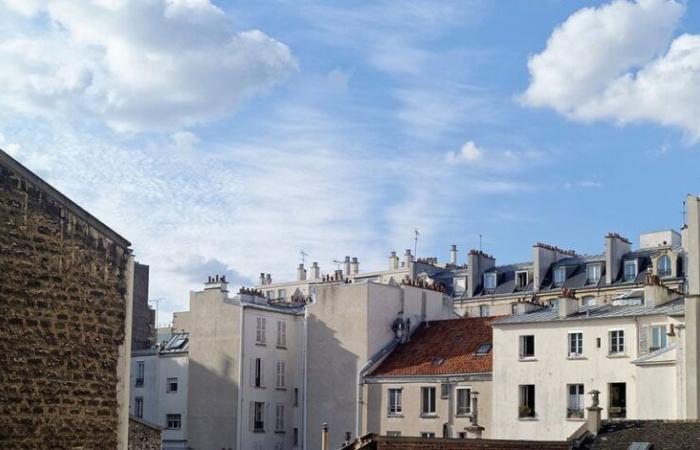
Air pollution constitutes a major public health issue: emissions associated with the combustion of coal, gas, oil and also wood are often singled out for this reason.
Let us emphasize as a preamble that emissions of pollutants responsible for atmospheric pollution should not be confused with greenhouse gas emissions contributing to climate change.
Types of pollutants in the air
Fine particles
Fine particles are the main pollutants incriminated when it comes to air pollution. These particles are differentiated by their diameter:
- PM10 fine particles whose diameter is less than 10 micrometers (1 μm = 10−6 m) ;
- PM2.5 fine particles whose diameter is less than 2.5 μm. The latter are the most dangerous because they enter the body more easily.
As an order of magnitude, a grain of fine sand has a diameter of approximately 90 μm.
The particles can be “ primary pollutants when they are directly emitted into the atmosphere, or secondary pollutants when they are generated from other so-called precursor pollutants », indicates Ademe(1).
Other pollutants
Among the main other air pollutants, we distinguish gases such as nitrogen oxides (Nox), sulfur dioxide (SO2), l’ammoniac (NH3) or even carbon monoxide (CO) and volatile organic compounds called “VOCs” (benzene, formaldehyde, isoprene, etc.).
Sources of air pollution
Air pollutants each come from different sources: fine particle emissions, for example, mainly come from the residential sector (heating with wood, fuel oil, coal or green waste fires) while nitrogen oxides come mainly from road transport.
Nearly 80% of the sulfur dioxide emitted in France comes from industry (oil refining, construction materials, metallurgy, etc.) while almost all of the ammonia comes from the agricultural sector (cattle breeding, mineral and organic fertilizers).
Wood heating in question
Wood heating is responsible for 62% of annual fine particle emissions in France according to Ademe(2). The agency emphasizes that, “ in an old wood heater (installed before 2002) or in an open fireplace, wood combustion is incomplete and contributes significantly to air pollution, even more so if the burned wood is damp ».
In Île-de-France, the Airparif air quality observatory also highlights that wood heating is the cause of “ more than half of fine particles » emitted, followed by road transport (notably diesel and gasoline vehicles) and construction site activities.
Weather impact
Different weather conditions can impact air pollution:
- anti-cylonic conditions during periods of extreme cold give rise to the phenomenon of “thermal inversion” which blocks pollutants on the ground;
- the absence of wind can prevent the dispersion of pollutants;
- humidity and heat favor the production of “secondary” pollutants (such as tropospheric ozone or “bad ozone”, produced in particular from nitrogen oxides).
Episodes of fine particle pollution tend to take place in winter and spring, while those involving ozone are mainly observed in summer.
Consequences
Chronic exposure to air pollutants, particularly fine particles, increases the risk of contracting respiratory and cardiovascular diseases, including lung cancer and stroke.
In 2021, the European Environment Agency (EEA) estimates that 253,000 premature deaths in the 27-member European Union are attributable to fine particle pollution of less than 2.5 micrometers.(3).
In France, nearly 40,000 deaths per year are attributed to fine particle pollution (i.e. approximately 7% of total annual mortality according to Public Health France) and approximately 7,000 to that of nitrogen dioxide (approximately 1%).
Existing regulations
12 regulated pollutants
The concentration of certain pollutants in the air is regulated. At the level of the European Union (regulations transposed in France), there are 12 regulated pollutants: sulfur dioxide (SO2), nitrogen dioxide (NO2), l’ozone (O3), PM10, PM2.5, carbon monoxide (CO), benzene (VOC family), benzo[a]pyrene (PAH family), arsenic, cadmium, nickel, lead.
Note that pesticides are subject to increasing surveillance but are not regulated.
Vignette Crit’air
To reduce air pollution, low-emission zones have been created to access certain large cities (by gradually excluding the most polluting vehicles).
Access to these “ZFEs” (Low Emission Zones) depends on the Crit'Air sticker on your vehicle (the color of which depends on the engine and the age of the vehicle, to be ordered on the website www.certificat-air .gouv.fr).
Air pollution monitoring
Several sites provide information on the level of air pollution, including:
- the site www.geodair.fr which compiles data from approved air quality monitoring associations (AASQA);
- the site www.atmo-france.org which provides access to daily information for each region, with an ATMO index representing the air quality of the main cities.
Is air pollution decreasing in France?
French emissions of most air pollutants decreased between 2000 and 2023, but France remains faced with exceeding standards, as well as episodes of ozone and/or particle pollution, according to the latest report from outdoor air quality in France published in October 2024.
France remains “ faced with exceedances of regulatory air quality standards for the protection of human health in certain urban areas, as well as episodes of ozone and/or particle pollution in mainland France, the West Indies and in Guyana », specifies this government report.
Over the period 2000-2023, “the decline reaches 64% for nitrogen oxides (NOx), respectively 49% and 56% for (fine) particles with a diameter less than or equal to 10 µm (PM10) and those with a diameter less than or equal to 2.5 µm (PM2.5) and 87% for sulfur dioxide (SO2) ».
“Conversely, the annual average ozone contents (O3), pollutant whose formation is dependent in particular on weather conditions, have increased” (the report notes 2 episodes of pollution “on a national scale” in mainland France in 2023, in June and September).
Over the same period, annual concentrations of nitrogen dioxide (NO2), PM10, PM2,5 et SO2 fell but exceedances of standards were observed for NO2 and PM10 fine particles respectively “ in three and two urban areas in 2023 ».





